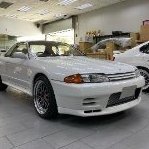What's goin on here? VTEC + Turbo + SC = Very hot engine...
Announcements
-
Similar Content
-
Latest Posts
-
What HVAC actuator is under the steering wheel? Do you mean on the RHS of the centre console, immediately to the left of your shin? If so, then yes, it is probably that one, because that is the mode door actuator, and from what I know, it's still a pain in the arse to replace. I don't know about whole dash out, but you certainly have to rip into the centre console section. I don't know if it's covered in the workshop manual, as I haven't spent much time looking at those parts of it. (and by "the workshop manual, I mean the R32 GTR one, which is the most comprehensive one we have, and it should be similar enough between that and later cars to serve as a guide).
-
No I got mine from a friend that had fabricated one … but I had to fit it to my setup which was a hks turbo setup. His was a Garrett -7. So one of my turbos was not a flange for one side … then I had a leak in the welds I had to find a weld shut … in the end the setup was decent priced but I spent a lot to get it fitted. A couple companies I checked would make it but you’re talking 7-9k aud with titanium. No joke mine was 6-7k even second hand after I had to fit it in Hong Kong … labour is expensive here.
-
I'd just like to restate that I don't think anyone here is actually hating I recently sold a car part to a guy who was building a forged auto R34, with MV stall and aiming at ~450kw. I told him that I'm him, from the future and to stop after it explodes once. I told him I knew he won't listen the first time, and that's fine. But if my predictions do come true - Change direction faster than I did. I also said it's probably no coincidence that the dyno plot of a reliable turbo engine starts to look a lot like a N/A motor. :p






Recommended Posts
Create an account or sign in to comment
You need to be a member in order to leave a comment
Create an account
Sign up for a new account in our community. It's easy!
Register a new accountSign in
Already have an account? Sign in here.
Sign In Now